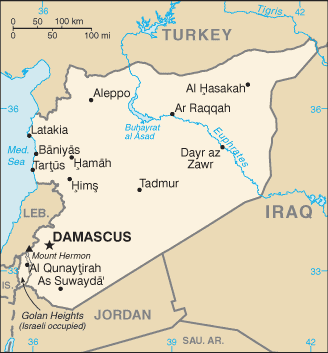Despite the Obama Administration continuing to insist that its strategy in Syria is "working," The Telegraph reports that two of the main rebel groups receiving weapons from the US to fight both the regime and jihadist groups in Syria have surrendered to al-Qaeda. Rather stunningly, the Syrian Revolutionary Front, one of the largest "vetted, moderate" US-backed rebel forces, has been effectively wiped out; and has handed over all their weapons and bases including US-provided anti-tank missiles and GRAD rockets. Simply out, "as a movement, the SRF is effectively finished," but apart from that US foreign policy is 'nailing it'. As The Telegraph concludes, for the US, the weapons they supplied falling into the hands of al-Qaeda is a realisation of a nightmare.
As The Telegraph reports (via Contra Corner),
Two of the main rebel groups receiving weapons from the United States to fight both the regime and jihadist groups in Syria have surrendered to al-Qaeda.
The US and its allies were relying on Harakat Hazm and the Syrian Revolutionary Front to become part of a ground force that would attack the Islamic State of Iraq and the Levant (Isil).
For the last six months the Hazm movement, and the SRF through them, had been receiving heavy weapons from the US-led coalition, including GRAD rockets and TOW anti-tank missiles.
But on Saturday night Harakat Hazm surrendered military bases and weapons supplies to Jabhat al-Nusra, when the al-Qaeda affiliate in Syria stormed villages they controlled in northern Idlib province.
The development came a day after Jabhat al-Nusra dealt a final blow to the SRF, storming and capturing Deir Sinbal, home town of the group’s leader Jamal Marouf.
The attack caused the group, which had already lost its territory in Hama to al-Qaeda, to surrender.
"As a movement, the SRF is effectively finished,” said Aymen al-Tammimi, a Syria analyst. “Nusra has driven them out of their strongholds of Idlib and Hama.”
The collapse of the SRF and attacks on Harakat Hazm have dramatically weakened the presence of moderate rebel fighting groups in Syria, which, after almost four years of conflict is increasingly becoming a battle ground between the Syrian regime and jihadist organisations.
For the United States, the weapons they supplied falling into the hands of al-Qaeda is a realisation of a nightmare.
And Anti-War's Jason Dietz sums up perfectly…
The Obama Administration continues to insist that its strategy in Syria is “working,” but the setbacks on the ground are growing more dramatic by the day, and the Syrian Revolutionary Front, one of the largest “vetted, moderate” US-backed rebel forces, has been effectively wiped out.

The Revolutionary Front was routed by both ISIS and al-Qaeda’s Jabhat al-Nusra in recent days, and has now surrendered outright after the fall of Deir Sinbal, agreeing to hand over all their weapons and bases to Nusra.
Those weapons, it should be made clear, include US-provided anti-tank missiles and GRAD rockets, and adds to the sizable cache of American weapons now in the hands of US enemies in Syria.
Nusra and ISIS had been at odds for most of the year going into the US war, but the administration’s decision to attack the both of them has driven them into a growing coordination, and turned the already massive ISIS into an even bigger group with even more international contacts.
The US had been backing groups like the Revolutionary Front with an eye toward eventually installing them as the new Syrian government, but even with US and GCC bankrolling, they never grew beyond comparatively small factions within the overall, Islamist-dominated rebellion.
That didn’t stop the US from throwing larger amounts of more advanced weaponry at them, despite it being fairly obvious that either ISIS or Nusra could take them out at any time.
There wasn’t much need for ISIS or Nusra to do so until the US expanded its war into Syria in September, and that made US allies on the ground huge targets for enemies they were not able to defeat.
The administration will no doubt downplay the defeat of the Revolutionary Front, having distanced themselves from the existing moderate factions with an eye toward eventually creating their own rebel group.
Yet the same problems loom large if and when that new group is created, as it will presumably be made up of recruits from the same feckless fighting forces, and awash in the same US armaments that didn’t work this time.
The US policy of throwing weapons and funds at such factions has not only failed, it has failed spectacularly, giving ISIS and Nusra a steady stream of advanced weapons to loot from smaller forces.
Not only has the administration clearly not learned that lesson, but the plan to create a new rebel force seems destined to repeat it, on an even larger scale.
* * *
Do nothing stupid…







via Zero Hedge http://ift.tt/10jtOvy Tyler Durden